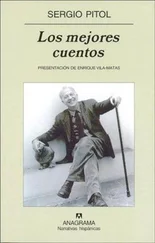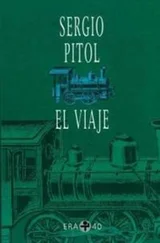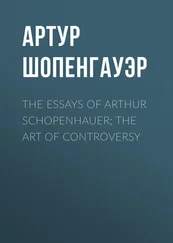As Amaranta’s servant, who lodges at the Escorial, Gabriel witnesses an extraordinary event. The day of his arrival he wanders the corridors near his mistress’s apartments in the interior of the Palace. He sees there an imposing procession returning the Prince to his room as a prisoner. The sepulchral chiaroscuro of that scene again evokes Goya.
Gabriel spends only three or four days in the Escorial — long enough to reveal to him part of the rich variety of human baseness, and for him to comprehend the foul air and minefield that are part and parcel of living off the royal family. His experience in Madrid had accustomed the young protagonist to comedians — their habits, their whims, and their weaknesses. He need only step foot in the Palace in order to witness scenes that exceed in theatricality those previously enjoyed in the theater. Except that the monarchs represented by Isidoro Máiquez seem much more dignified and majestic to him than the one who wears the true crown. The flesh and blood king turns out to be “of middle stature, thick-set with a small face and high color, and devoid of any single feature which could suggest a distinction imprinted by Nature on his physiognomy between a king of blue blood and a respectable grocer.”
The scene in which Gabriel sees him for the first time constitutes the novel’s climactic moment: the Crown Prince is being led by his father through a dark corridor dimly lit by a single candlestick. Accompanying the King and the Prince are palace guards. The conspiracy has been uncovered: Fernando has just given a statement and is led to his quarters, where he will remain from then on as a prisoner. “His anxious, gloomy face revealed the bitterness in his soul.” A palace purge has followed the arrest of the Prince. No one feels safe in the royal premises, neither gentlemen nor ladies of the court, neither officers nor servants. Gabriel witnessed several spectacular arrests and senses fear and confusion in both courtiers and servants. Everything becomes fiction, pure theater; impure theater. The edifice of the State is about to collapse, but the King, as if he were aware of nothing, entertains himself in the hunt from morning to night at the royal reserves. No member of the family seemed to serve any purpose: a proclivity for laziness and a widely cultivated ignorance render them incapable of reacting to the storm that is brewing. Palace residents move incoherently, stunned by the Prince’s confession and his betrayal. His only hope lies in the arrival of the French army, the resulting liberation of the Prince and his ascent to the throne. Hidden involuntarily behind a tapestry, Gabriel overhears a conversation between Amaranta and Queen María Luisa. The Queen implores her loyal maid to intervene with the Minister of Mercy and Justice so that Lesbia is not questioned. She knows too many secrets; she may implicate her. She may have kept letters and objects that can be presented as evidence. Her appearance in the case was to be avoided by all means necessary. Having forgotten briefly about the danger, they speak glibly about past trysts and the distribution of governmental posts or ecclesiastical benefices and sinecures. The Queen wants Godoy to grant a bishop’s miter to the uncle of her youngest son’s wet nurse; he is opposed for petty reasons, simply because the aforementioned uncle has been a contrabandist and is semiliterate. But she is going to pressure Godoy — she says boasting of her powers — to force him to sign the appointment; otherwise, the crown will refuse to ratify the secret treaty with France that would grant her favorite sovereignty over the Algarves, which the French have promised after they occupy and divide Portugal. Look, if you do not make Gregorilla’s uncle a Bishop, we will not ratify the treaty, and you will never be King of the Algarves! Only a Queen could say such things.
A complex episode in the history of Spain plays out in the house of Carlos IV: a palace revolt, a frustrated parricide, Napoleonic troops advancing on national territory; the secret treaties with Napoleon have not been ratified. Danger lurks everywhere. Life at Court at times hangs in the balance. But in the den of the Grandees of Spain nothing seems to achieve greatness. The Queen amuses herself rambling about her love affairs, the hatred she feels for those who “slander” her, the machinations she must contrive to block the path of some ladies and gentlemen who support her son’s cause, and the negotiations with her favorite. Her concept of justice slithers along the ground; the great qualities she recognizes in Caballero, the Minister of Mercy and Justice, her friend and ally, lie in his ability to conceal her indiscretions. “He is our great friend. Ever since he found a means of accusing and sending to prison the sentry and the civilian who recognized us when we went in masks to the fête of Santiago, I am greatly in his debt. Caballero does nothing but what we tell him; he is capable of making Lords of Appeal out of markers from the bullring if we ordered it. He is a capital fellow and does his duty with the docility that becomes a true minister. The poor man takes great interest in the welfare of the country.” No heroics, no true agony can thrive in this world of frightened puppets, besotted and whimpering, lacking the slightest notion of State; the welfare of the kingdom, her Majesty believes, lies in incarcerating those who have discovered her presence in an inconvenient place, and in an obedient minister, a simple accomplice, who promptly obeys her wishes.
Gabriel contemplates the scene exactly as he might follow a performance from a box at the Teatro del Príncipe; because in The Court of Carlos IV the theater as world and the world as theater appear to be one and the same. Palace life is for him so dramatic, so theatricalized, that the boundaries between the real and the fictional, the realistic and the unreal, seem to constantly blend together. Situations that could be tragic with other characters the closer they get to the circle of Carlos IV and his favorites are highly ribald. The mechanism is one of farce with piquant details. The Queen is one of the targets at which they aim; popular fury against her is unanimous — for being a libertine, predatory, a fool, ridiculous, ugly. In that theater where Gabriel has appeared, the comments he overhears accentuate the comedic toy-like character that the royal family represents. A kitchen assistant reveals to him that the Queen’s teeth are false, and she has to remove them to eat, and she doesn’t allow anyone to see. “‘You see,’ the scullion went on, ‘they are quite right in accusing the Queen of deceiving the people and trying to persuade them to believe the thing that is not. How can she expect her subjects to love a sovereign who wears other people’s teeth?’”
The only mechanism that seems to sustain him and lend an appearance of life to that rusty building is intrigue. There is no one in Court who does not scheme, from the monarchs to their grooms. And this activity generates a vitality, fictitious perhaps, but effective. Gabriel discovers the strength of this practice by observing the machinations of his protector: “Amaranta was not merely a cunning and intriguing woman; she was intrigue incarnate; she was the very demon of palaces — that terrible spirit which makes history, with all her sense and dignity seem sometimes the genius of mystification and mistress of falsehood — that terrible spirit which has brought confusion on our race and made nations enemies — debasing monarchies and republics alike, and despotic governments no less than free ones. She was the incarnation of that hidden machinery, of which the outer world knows nothing, but which reaches from the gates of a Palace to the King’s chambers, and on whose springs, worked by a hundred hands, depend honors, dignities, nay, life itself; the noble blood of armies, and the glory of nations. Greed, bribery, injustice, simony, arbitrary and licentious authority…”
Читать дальше












